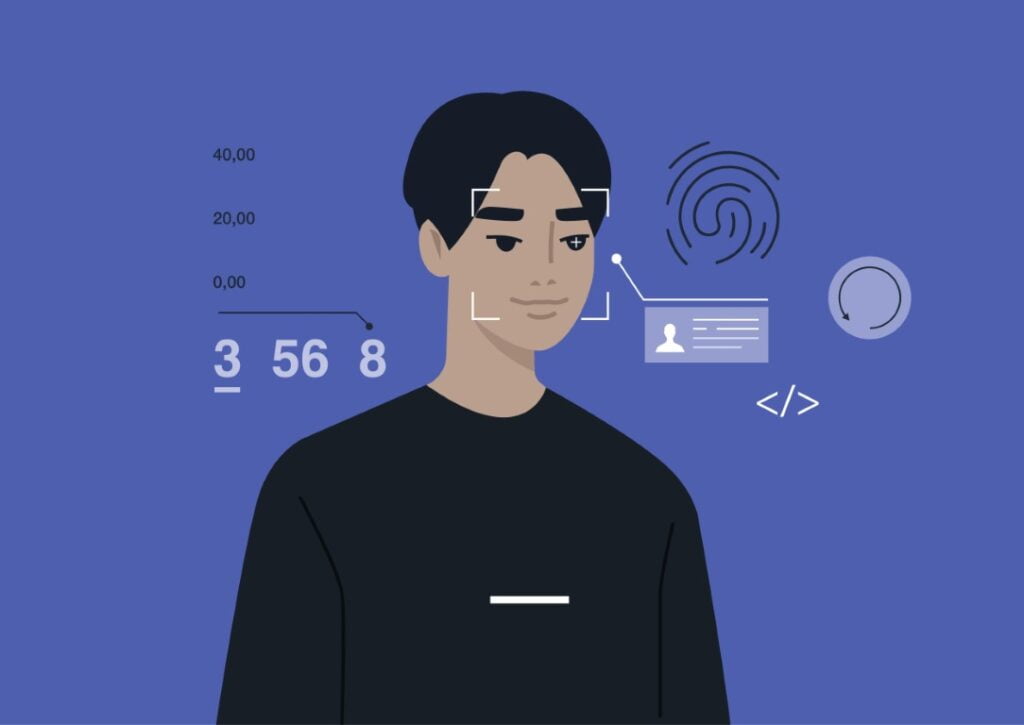Table of Contents
Let's Define Some Things
Non-profit organizations are integral pillars of our society, contributing significantly to various causes and communities. They carry out a myriad of vital functions, which often involve the management and utilization of sensitive and confidential information. Whether it’s the meticulous handling of donor data, the preservation of patient records (particularly for non-profit healthcare institutions), or the safeguarding of any other type of confidential information, the responsible management of such data stands as a paramount duty for these organizations. Within the intricate framework of data protection and security, one indispensable tool emerges as an assurance for non-profits: the Business Associate Agreement (BAA).
In the multifaceted landscape of non-profit activities, data is the lifeblood that facilitates the fulfillment of their mission. Donor data, for instance, serves as the foundation for fundraising efforts, allowing organizations to connect with supporters and cultivate relationships. Meanwhile, in the realm of healthcare-focused non-profits, the meticulous management of patient records is not only a legal mandate but also a matter of patient care and trust.
Confidential information extends beyond these examples, encompassing various aspects such as internal financial records, strategic plans, and personal details of program beneficiaries. Irrespective of the specific data type, the responsibility to maintain the integrity, security, and privacy of such information is both a legal and ethical imperative for non-profits. Amidst the intricate web of responsibilities and obligations, the Business Associate Agreement (BAA) emerges as a linchpin in the data security strategy of non-profit organizations. It serves as a comprehensive and legally binding document that outlines the terms, conditions, and expectations regarding the protection of sensitive data shared with third-party entities.
Understanding the Business Associate Agreement (BAA)
A Business Associate Agreement, commonly referred to as a BAA, is a legally binding contract that defines the responsibilities and requirements of a non-profit organization and its business associates concerning the protection of sensitive data. A business associate is any entity or individual that provides services to the non-profit and requires access to protected health information (PHI) or other confidential data.
6 Reasons Why Non-Profits Need a BAA
- Compliance with Regulations: Non-profits often handle sensitive information, such as donor records or patient data. To comply with regulations like the Health Insurance Portability and Accountability Act (HIPAA) for healthcare organizations or the General Data Protection Regulation (GDPR) for international operations, having a BAA in place is essential. Failure to comply with these regulations can lead to hefty fines and legal consequences.
- Data Security: A BAA establishes clear guidelines for how sensitive information is handled, stored, and protected by business associates. This ensures that data breaches are less likely to occur, protecting the reputation of the non-profit and the trust of its stakeholders.
- Accountability: A BAA sets the expectations for both parties involved. It outlines the responsibilities of the non-profit and its business associates, making it clear who is accountable for data breaches or non-compliance with data protection regulations.
- Risk Mitigation: By having a BAA in place, non-profits can mitigate the risks associated with data breaches and regulatory violations. It outlines the steps that need to be taken in case of a breach, helping to minimize damage and potential legal repercussions.
- Protection of Donor and Patient Trust: Non-profits rely heavily on the trust of their donors, patients, and supporters. A BAA helps assure these stakeholders that their sensitive information is being handled with care and in compliance with the law, strengthening the non-profit’s reputation.
- Financial Security: The financial consequences of a data breach can be devastating for a non-profit. Fines, legal fees, and loss of donors’ trust can lead to financial hardship. A BAA can help protect the organization’s financial stability by minimizing these risks.
Compliance With Regulation
Non-profit organizations frequently find themselves entrusted with a wealth of sensitive data, ranging from invaluable donor records to highly confidential patient information. In this age of heightened data awareness and stringent regulatory frameworks, ensuring the protection and proper management of this data is paramount. For healthcare organizations within the non-profit sector, the Health Insurance Portability and Accountability Act (HIPAA) looms large as a pivotal regulatory guideline. In the international arena, particularly for those non-profits with global operations, the equally impactful General Data Protection Regulation (GDPR) comes into play. In the complex world of data privacy and security, it’s not merely a suggestion but a necessity to have a Business Associate Agreement (BAA) firmly in place.
A BAA is essentially the contractual glue that binds non-profit entities with third-party service providers who handle their sensitive data. This legally binding document serves as a fortified fortress, outlining the responsibilities and obligations of both parties when it comes to safeguarding this precious information. Failure to adhere to the provisions of HIPAA or GDPR, such as the lack of a robust BAA, can expose non-profits to a multitude of dire consequences. Fines, imposed with a heavy hand, can cripple even the most well-intentioned organizations, draining resources that could otherwise be channeled towards their noble causes. The threat of legal action looms ominously, tarnishing reputations and distracting from the pursuit of their mission.
Data Security
where data is both the lifeblood and a potential Achilles’ heel of organizations, the role of a BAA cannot be overstated. At its core, a BAA functions as the digital rulebook, outlining with surgical precision how the delicate fabric of sensitive information should be meticulously woven, handled, stored, and fortified by business associates. It’s akin to a meticulously designed blueprint for constructing a fortress of data security. Sensitive data, often the very life essence of non-profits, includes donor records brimming with invaluable insights, and patient data that demands the highest degree of confidentiality. Imagine this information as digital gold bars, entrusted to the non-profit for safekeeping. A well-crafted BAA is like an impervious vault door, complete with a multi-faceted security system, ensuring these precious digital assets remain untouched by unauthorized hands.
In the era of relentless cyber threats and regulatory frameworks as intricate as the finest lines of code, the BAA becomes the guardian of digital sanctity. It embodies the collective wisdom of cybersecurity experts, legal minds, and tech-savvy strategists, crystallizing their insights into a binding agreement. But what’s the true power of a BAA, beyond its legal jargon and digital safeguards? It’s the assurance it provides. The very existence of a well-structured BAA acts as a formidable deterrent to data breaches. It’s the digital equivalent of a “Keep Out” sign for cybercriminals, discouraging even the most audacious attempts to breach the fortress.
By meticulously defining data handling protocols, encryption methods, and access controls, a BAA creates a secure cocoon around sensitive information. This cocoon, fortified with the latest encryption algorithms and cybersecurity best practices, is an impenetrable shield against the relentless onslaught of cyber threats. Now, let’s consider the broader implications. Data breaches are not merely technical failures; they’re breaches of trust. In the interconnected world we inhabit, news of a data breach can spread faster than a computer virus, tarnishing the reputation of a non-profit in the blink of an eye. The trust of donors, supporters, and stakeholders can be severely eroded, potentially jeopardizing the very existence of the organization.
Accountability
A BAA, in essence, is the GPS for navigating this complex landscape, meticulously charting the course of data responsibility for all involved. At its core, a BAA is not just a contractual document; it’s a digital constitution that lays out the rights and responsibilities of the non-profit and its business associates. In the realm of data, it’s a shared manifesto, a cyber Magna Carta, if you will. It sets the stage by defining in painstaking detail who does what and who answers for what in the intricate dance of data management.
Let’s break this down further. In the world of data, accountability is not just a buzzword; it’s a digital currency of trust. A BAA acts as a ledger, ensuring that the balance of responsibility is crystal clear. It’s like an advanced algorithm, determining which party is accountable for potential data breaches, and which shoulders the burden of non-compliance with the labyrinthine regulations governing data protection. Consider this scenario: A non-profit is entrusted with a treasure trove of donor data, a digital repository of support and goodwill. This data is not just a resource; it’s a sacred trust. A BAA steps in as the virtual sentinel, guarding this treasure with unyielding vigilance.
By explicitly spelling out the roles and obligations, a BAA ensures that the non-profit and its business associates are aligned in their data stewardship mission. It defines the parameters of data access, storage, and transmission with the precision of a quantum algorithm. It mandates encryption standards, access controls, and incident response procedures with the finesse of a finely-tuned software update. Moreover, a BAA is not a static document but a dynamic framework, capable of evolving with the ever-shifting landscape of data regulations and cybersecurity threats. It adapts to incorporate new technologies, emerging threats, and evolving best practices, ensuring that the data protection fortress remains impervious to the relentless advances of cyber adversaries.
Risk Mitigation
A Business Associate Agreement (BAA) is a powerful tool for risk mitigation, especially in the context of data security and privacy. A BAA is a legally binding document that outlines the roles and responsibilities of both parties – your organization and your business associate. By clearly defining these roles, it reduces the risk of misunderstandings or disputes regarding data handling and protection. Here’s how a well-structured BAA can help you mitigate risks:
- Compliance Assurance: Many industries are subject to strict regulatory requirements, such as HIPAA for healthcare or GDPR for handling personal data. A BAA helps ensure compliance with these regulations by specifying how data should be handled and protected. Failure to comply with these regulations can result in hefty fines, and a BAA acts as a safeguard against such penalties.
- Data Security Standards: A BAA typically includes provisions for data security standards and practices. It can mandate encryption, access controls, regular security assessments, and incident response plans. These measures help protect sensitive data from breaches, reducing the risk of data loss or unauthorized access.
- Accountability: One of the key benefits of a BAA is that it clearly defines who is responsible in case of a data breach or non-compliance. This accountability helps ensure that all parties take data protection seriously and are prepared to address any issues promptly. It’s like having a designated lifeguard at the data pool.
- Vendor Selection: When choosing a business associate, you can evaluate their commitment to data security and compliance. By requiring them to sign a BAA, you ensure they are legally bound to follow the agreed-upon security measures, reducing the risk of partnering with a careless or non-compliant entity.
- Incident Response Plan: A well-crafted BAA will include provisions for how data breaches are to be handled. This includes reporting requirements, notification procedures, and responsibilities for remediation. Having a clear plan in place reduces the chaos and potential damage during a security incident.
- Risk Assessment: In many cases, a BAA will require the business associate to conduct a risk assessment of their data handling practices. This can identify vulnerabilities and potential risks, allowing for proactive risk mitigation strategies to be implemented.
A BAA often includes provisions for ongoing monitoring of data security practices by both parties. This helps ensure that the agreed-upon security measures are consistently followed, reducing the risk of complacency leading to data breaches. Reputation Protection: Beyond legal and financial risks, a BAA helps protect your organization’s reputation. Data breaches can erode trust among stakeholders, donors, and clients. A BAA demonstrates your commitment to data protection, which can help maintain trust even in the face of a breach.

Protection of Donor and Patient Trust
A BAA is a crucial instrument for preserving donor and patient trust by providing clarity and accountability in data handling. It delineates roles and responsibilities, assuring both parties that their sensitive information is managed with care and legal compliance. This legal document serves as a shield, demonstrating your organization’s commitment to safeguarding data within the bounds of relevant regulations like HIPAA or GDPR, which is essential for instilling confidence.
Furthermore, a BAA incorporates data security measures, such as encryption and access controls, reinforcing the perception of stringent security around donor and patient information. It also outlines incident response procedures, showcasing your organization’s preparedness to address potential breaches transparently and swiftly, which is crucial for maintaining trust even during challenging moments.
Ultimately, a BAA acts as a beacon of transparency and consent, ensuring that donors and patients are well-informed about how their data is used and who has access to it. This transparency strengthens trust, as it assures them that their data is being handled with utmost respect and responsibility, contributing to a positive reputation for your organization in data management and protection.
Financial Security
Beyond the immediate chaos and costs of remediation, a data breach can trigger a chain reaction of financial consequences that ripple through the organization. First and foremost, the prospect of hefty fines looms large. Regulatory bodies have sharpened their focus on data protection and are armed with a litany of rules and penalties. For non-profits, especially those in healthcare, violating the Health Insurance Portability and Accountability Act (HIPAA) or similar regulations can result in punitive fines that can deplete financial resources faster than a cyberattack. A BAA serves as the first line of defense by establishing a clear framework for compliance, mitigating the risk of regulatory penalties.
Legal fees are another financial quagmire that can quickly swallow an organization’s resources in the wake of a data breach. Lawsuits and litigation can be relentless and expensive. However, a well-structured BAA doesn’t just serve as a protective shield; it’s akin to having a legal guardian on retainer. It delineates the responsibilities of both parties, ensuring that in the event of a breach, the legal landscape is well-charted, reducing the complexity and associated costs of legal battles. Perhaps the most intangible yet priceless asset that’s often overlooked in the financial calculus of data breaches is trust. Donors are the lifeblood of non-profits, and their trust is invaluable. When news of a data breach breaks, the trust quotient can plummet like a falling stock price. Donors may withdraw their support, questioning the organization’s ability to safeguard their sensitive information. This loss of trust can have profound financial implications, potentially affecting donations and long-term sustainability.
Here’s where a BAA becomes a strategic asset. It’s not just a legal document; it’s a symbol of your organization’s commitment to data security and compliance. It communicates to donors and stakeholders that their information is handled with the utmost care, reinforcing their trust. In essence, a BAA acts as an investment in donor and stakeholder confidence, an insurance policy against the erosion of financial stability caused by a breach-induced exodus of support.
The Downfalls of Not Having a BAA Agreement
Let's explore what happens if you neglect the BAA:
Non-compliance with data protection regulations like HIPAA or GDPR can result in severe legal consequences, including hefty fines and sanctions. Legal battles can be expensive and time-consuming.
Without guidelines on security, non-profits are at a higher risk of data breaches. These breaches can lead to the exposure of sensitive information, compromising the privacy of donors, or patients.
Data breaches or non-compliance can erode the trust of donors, patients, and supporters. Once trust is lost, it can be challenging to rebuild, impacting your ability to raise funds and carry out its mission.
Fines, legal fees, and the cost of addressing a data breach can have a significant financial impact on non-profits, potentially diverting resources away from their core mission and services.
A data breach or violation can tarnish your reputation, making it hard to donors and partners. Rebuilding a damaged reputation can be a long process.
Dealing with the aftermath of a data breach or legal battle can disrupt normal operations, diverting staff time and resources away from the organization’s mission and services.
Bottom Line
Business Associate Agreement (BAA) is not just a legal requirement; it is a crucial tool that can protect non-profit organizations from a wide range of potential risks and downfalls. By establishing clear guidelines, responsibilities, and expectations, a BAA helps non-profits maintain compliance with data protection regulations, safeguard sensitive information, and preserve the trust and financial stability of the organization. It’s not just a legal document; it’s a shield that non-profits can use to protect themselves and their stakeholders in an increasingly data-driven world.

